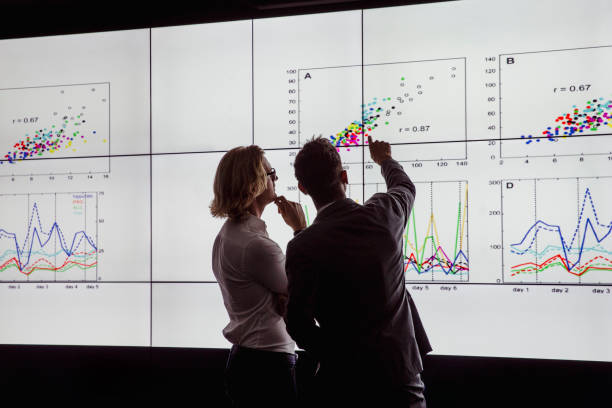Making precise data-driven decisions

Introduction
Data forms the backbone of many scientific and business processes. But understanding the various types of data can be daunting. What is this difference between Discrete and Continuous Data? Read this article and learn more.
Discrete vs Continuous data
Based on the characteristics of the data, it can be broadly categorized into two- Discrete Data and Continuous Data.
– Discrete Data: This type of data consists of distinct, separate values. Can be counted, but cannot be measured. For instance, the number of employees in a company or the number of cars in a parking lot.
– Continuous Data: This data type represents measurements. It can take on any value within a given range. Examples include height, weight, temperature, or time.
Key Characteristics of Discrete Data
1. Countable Nature: Discrete data always comes in whole numbers. For instance, you can’t have 2.5 students or 3.3 laptops.
2. Distinct Values: There’s no in-between for discrete data. It’s either one value or another, never a combination.
3. Finite Possibilities: Typically, there’s a limited set of possibilities for discrete data. For example, the result of a dice roll can only be between 1 and 6.
Key Characteristics of Continuous Data
1. Measurable: Continuous data is measurable, like the temperature of a room or the weight of a person.
2. Infinite Possibilities: There’s an infinite number of potential values within the range. For example, a person’s height could be any value within the possible human height range.
3. Uses Intervals: Continuous data often falls within specific intervals, such as the time it takes for an ice cube to melt.
Visualisation of Data
The way we visualise these two data types can be very different.
– Discrete Data Visualization: Often visualised using bar graphs or pie charts since individual counts and percentages are highlighted.
– Continuous Data Visualization: Typically represented using histograms or line graphs to show distributions or trends over an interval.
Applications and Use Cases
Understanding the attributes of a data can immensely influence how you use it.
1. Discrete Data in Business: Inventory management, sales forecasting, and customer segmentation are areas where discrete data shines.
2. Continuous Data in Science: Fields like meteorology, medicine, and physics rely heavily on continuous data for measurements and predictions.
Analytical Techniques
Different data types require different analytical approaches.
1. Discrete Data Analysis: Techniques such as probability mass functions or binomial distributions can be employed.
2. Continuous Data Analysis: Here, methods like probability density functions or normal distributions are more suitable.

FAQs
- What is the fundamental difference between discrete and continuous data?
Discrete data consists of distinct, countable values, whereas continuous data represents measurable quantities with infinite possibilities within a given range.
- Why is understanding the difference important?
Knowing the difference helps in choosing the right analytical tools, visualisation methods, and ensures the accuracy of predictions and findings.
- Can data be both discrete and continuous?
While a dataset can contain both types of data, an individual data point is either discrete or continuous, not both.
- How do I decide which data type I’m dealing with?
Ask yourself if you can count or measure the data. If it’s countable, it’s discrete. If it’s measurable over a range, it’s continuous.
- Are there any overlaps in visualisation methods for both data types?
Yes, while certain methods are preferred for each type, tools like scatter plots can be used for both discrete and continuous data to some extent.
- Why is discrete data always in whole numbers?
Discrete data represents countable items or occurrences, which can’t be fractional. You can’t have half a student or one-third of a car.
- What’s an example of continuous data in daily life?
Temperature readings throughout the day are an example. The temperature can vary continuously, having infinite possible values within a given range.
Conclusion
Discrete vs Continuous data – Although the differences may be subtle, knowing the difference is vital. Whether you’re diving into business analytics or scientific research, your insights’ accuracy hinges on this understanding. As the saying goes, “Knowledge is power!” And in the realm of data, distinguishing between discrete and continuous data empowers you to make informed decisions and predictions.
External Links/ Sources:
